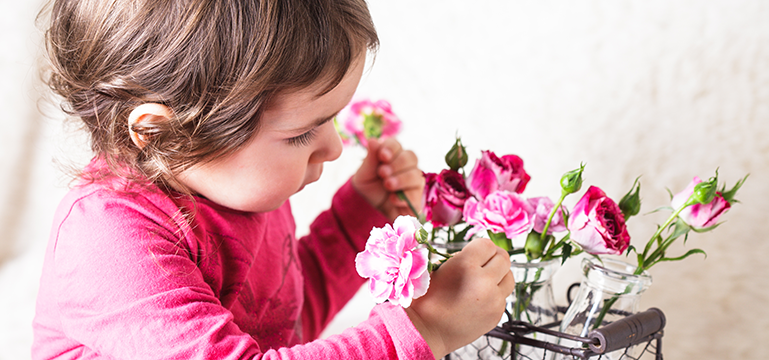Local visits nurture pride in the community and an understanding of the world

Quick links:
Information about the setting
Cylch Meithrin Penparc is a Welsh-medium setting. It meets in a self-contained cabin on the grounds of Ysgol Gynradd Penparc, in Ceredigion local authority. The setting provides education five mornings a week, between 9.00am and 11.30am during term time.
The setting is registered to admit 19 children between two and four years old. At the time of the inspection, 18 children were receiving funded early years education. A majority of children who attend the setting come from English-speaking homes.
The setting employs three qualified practitioners, including the leader. The leader began in post in May 2013.
Context and background to the effective or innovative practice
One of the setting’s strengths is its frequent and purposeful use of the children’s locality to nurture pride in their Welshness and understanding of the world. Children are given regular opportunities to visit various locations in the local area to learn more about the life and work of people in their community. This ensures highly engaging learning opportunities for the children and has a strong effect on their social skills, knowledge and understanding. Following these visits, practitioners stimulate further learning that develops children’s oracy and numeracy skills successfully.
Description of the nature of the strategy or activity
Practitioners give full consideration to the children’s interests, before preparing a range of excellent activities for them. As a result, they enable the children to develop a range of skills in engaging contexts. One example is when the children were asked ‘Where does milk come from?’. This evolved to create a mind map of the children’s theories, before visiting a local dairy farm. The setting makes the most of its relationship with the local community to create comprehensive learning experiences for the children.
Practitioners take advantage of every opportunity to expand and deepen learning experiences following visits. A notable example of this was planning and organising a visit to a florists and a local castle, before establishing a role-play florists and castle in the setting. Children and practitioners also create extremely striking displays, which are a means of celebrating what they have learned and sharing this with parents and visitors.
The setting works exceptionally well with the nearby school. Creating excellent links with the school was one of the priorities in the previous development plan. The setting worked diligently in order to develop a sound relationship based on good communication. For example, children are given regular opportunities to sing with pupils from the school, visit the local theatre together and join in with school assemblies. Recently, the children went to pick apples from the nearby orchard and cooked apple crisps to sell to the school children. The children were given opportunities to understand more about eating healthily, design the crisp packets and learn how to use real money.
What impact has this work had on provision and learners’ standards?
The child’s voice is a strong basis when planning learning experiences. Children contribute towards planning by creating mind maps, and practitioners act on their ideas. An example of this is the ‘pirate’ theme, when children were given an opportunity to dress as pirates and travel to the beach on a local bus. There, they were given an opportunity to ‘walk the plank’ over water, collect and sort various shells, and socialise. This encourages children’s interest and enthusiasm, and develops their self-confidence exceptionally well.
Practitioners develop rich and relevant learning experiences skilfully, which derive from the various visits. For example, the visit to the local florist was very successful in providing opportunities for children to develop their communication skills and practise their numeracy skills in real-life contexts. Children were encouraged to use language patterns that were used in the shop, handle money, count flowers, compare their sizes and place them in order from shortest to tallest. Practitioners adapt the level of challenge in activities, for example by starting with counting three flowers and adding more as they go. Children created signs and labels for the shop and the castle, and demonstrated early reading and writing skills highly successfully.
Practitioners take advantage of the opportunity to show children about their habitat and the world around them. Following a visit to a nature park, they were given extensive experiences to grow vegetables, cook, eat and take vegetables home with them. As a result, the children show a very good knowledge of where their food comes from. Visits also stimulate discussions among children following their experiences, which develops their oral skills highly successfully. Children have learned a great deal about individuals who work in different areas in their community.
How have you shared your good practice?
Good practice is shared with nursery teachers within the local authority in county-wide training that is held each term within the local authority. Information is shared with parents through social media, orally and in the community newspaper.